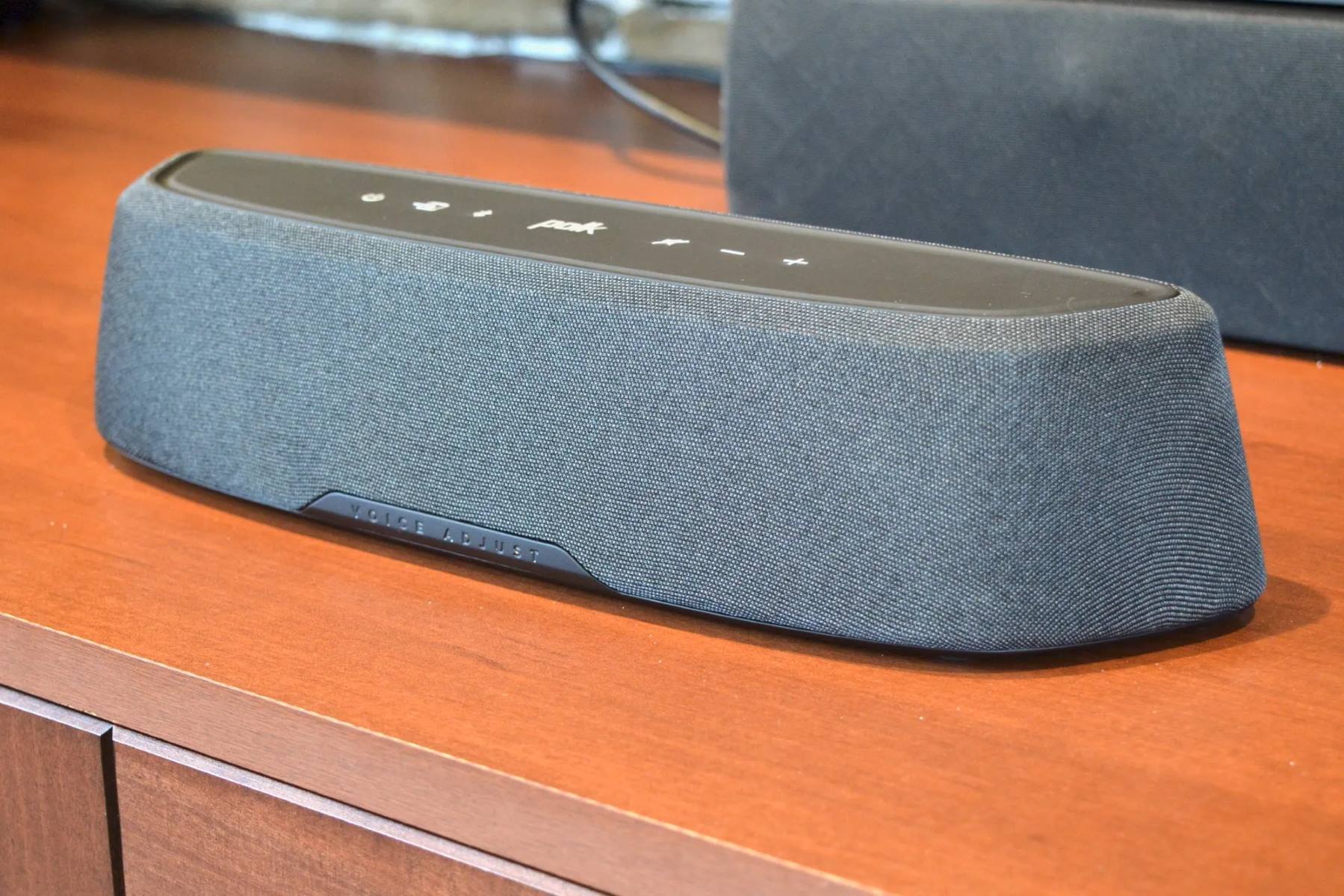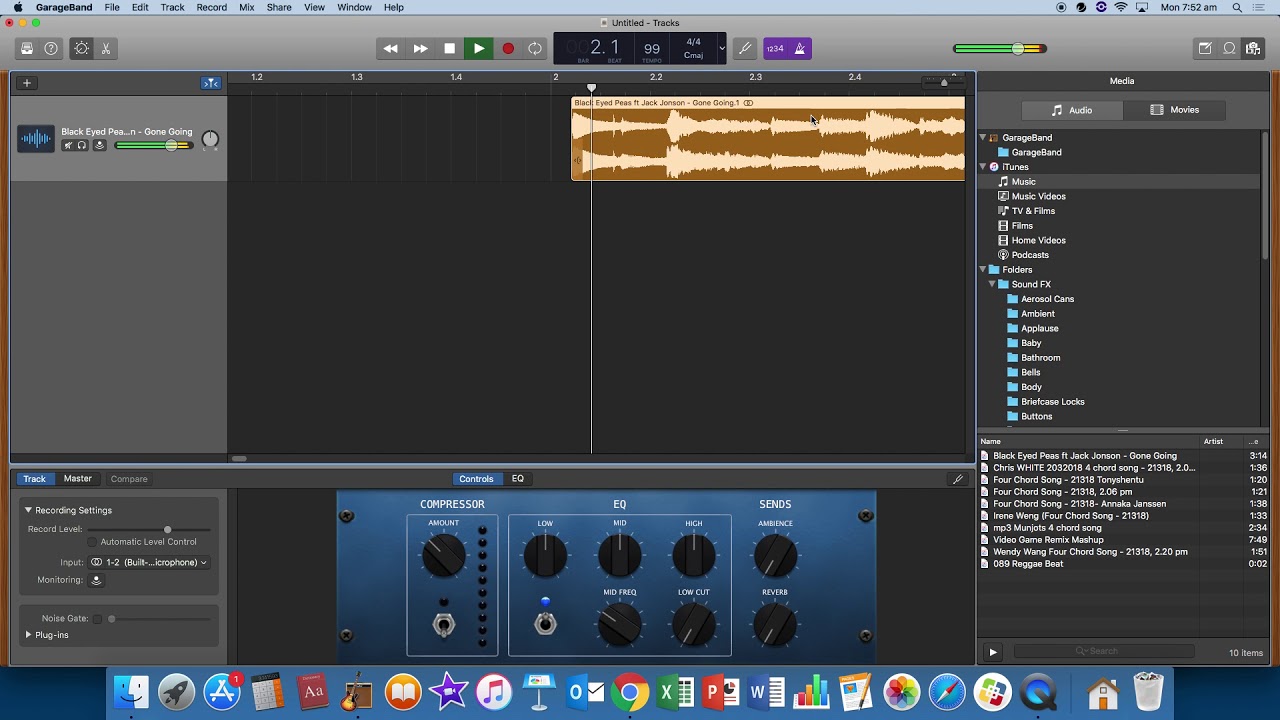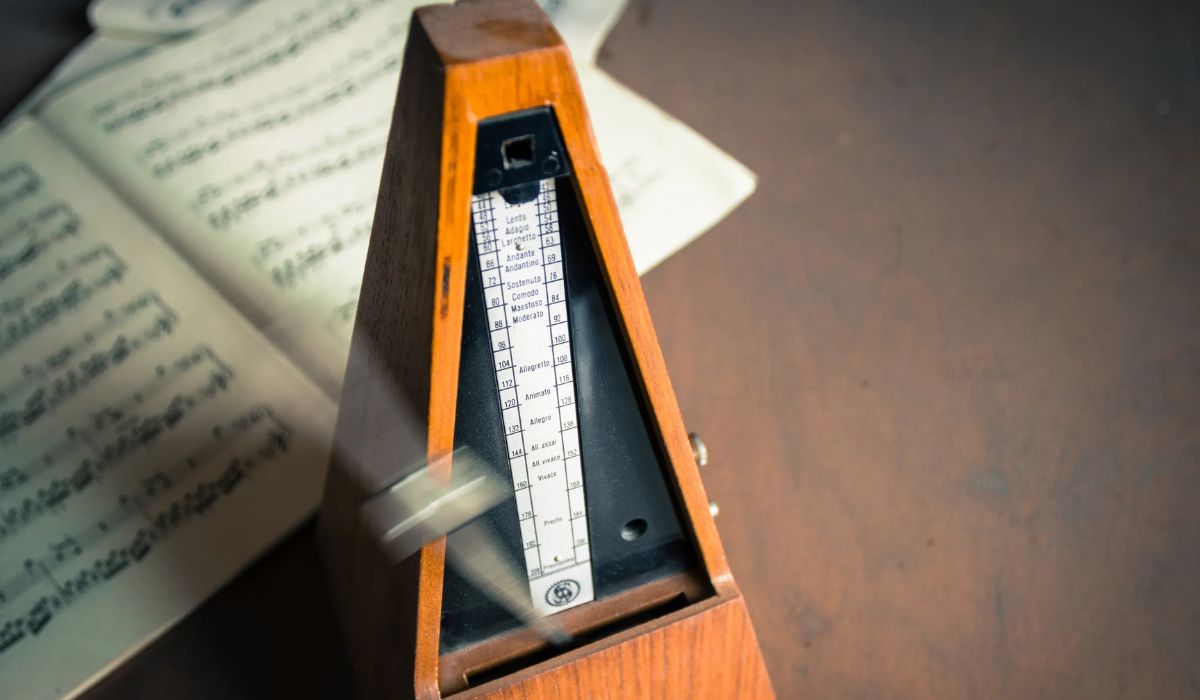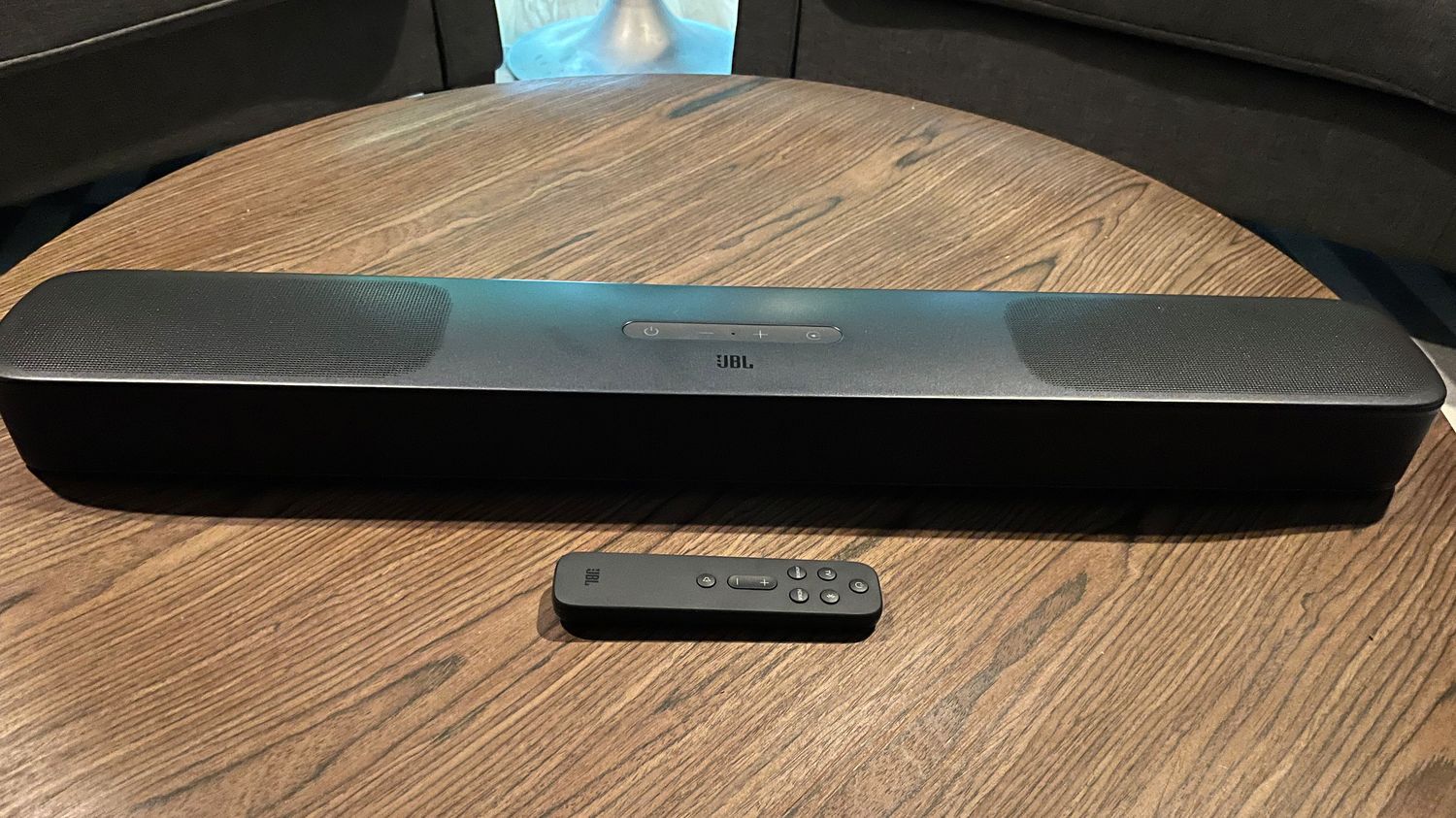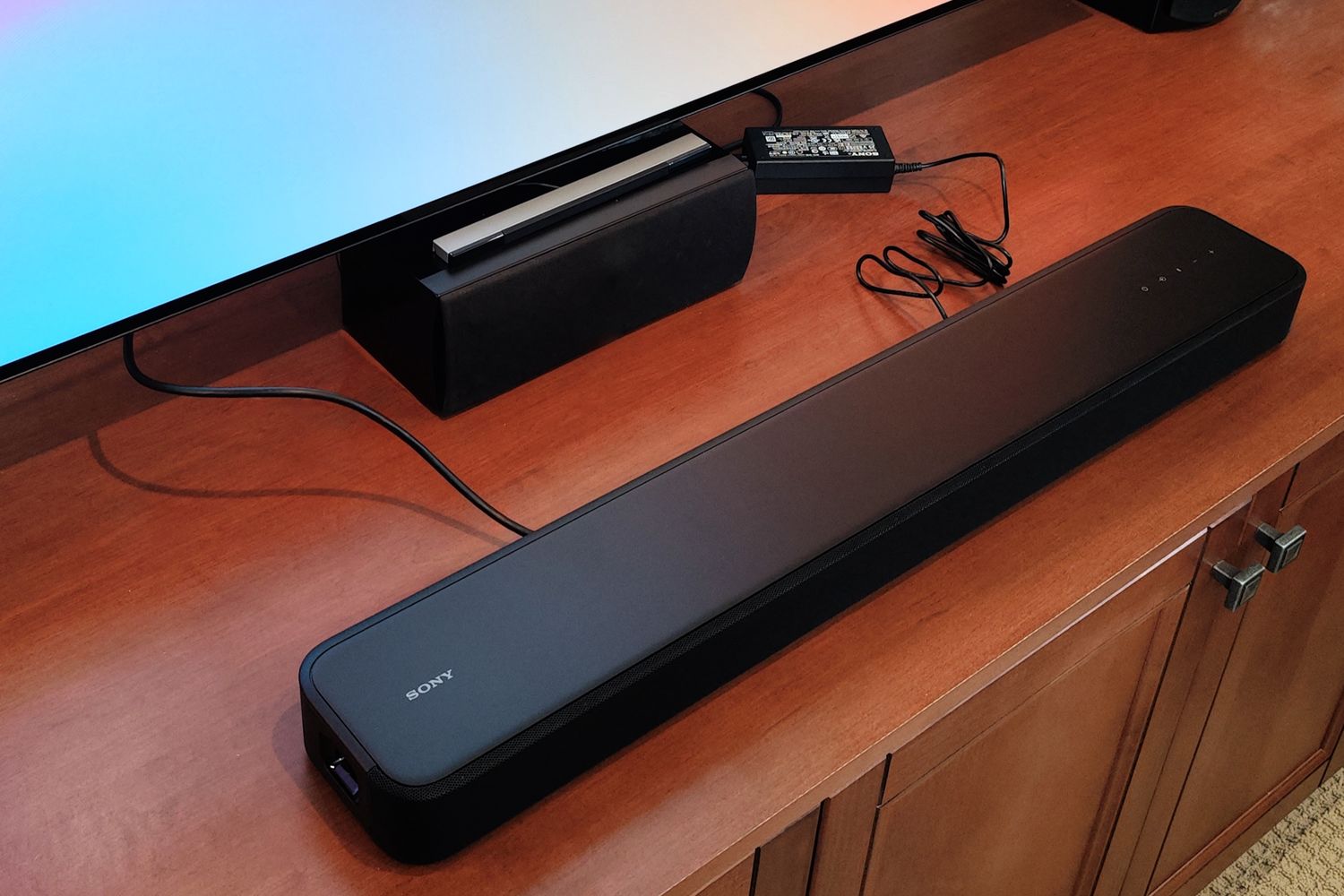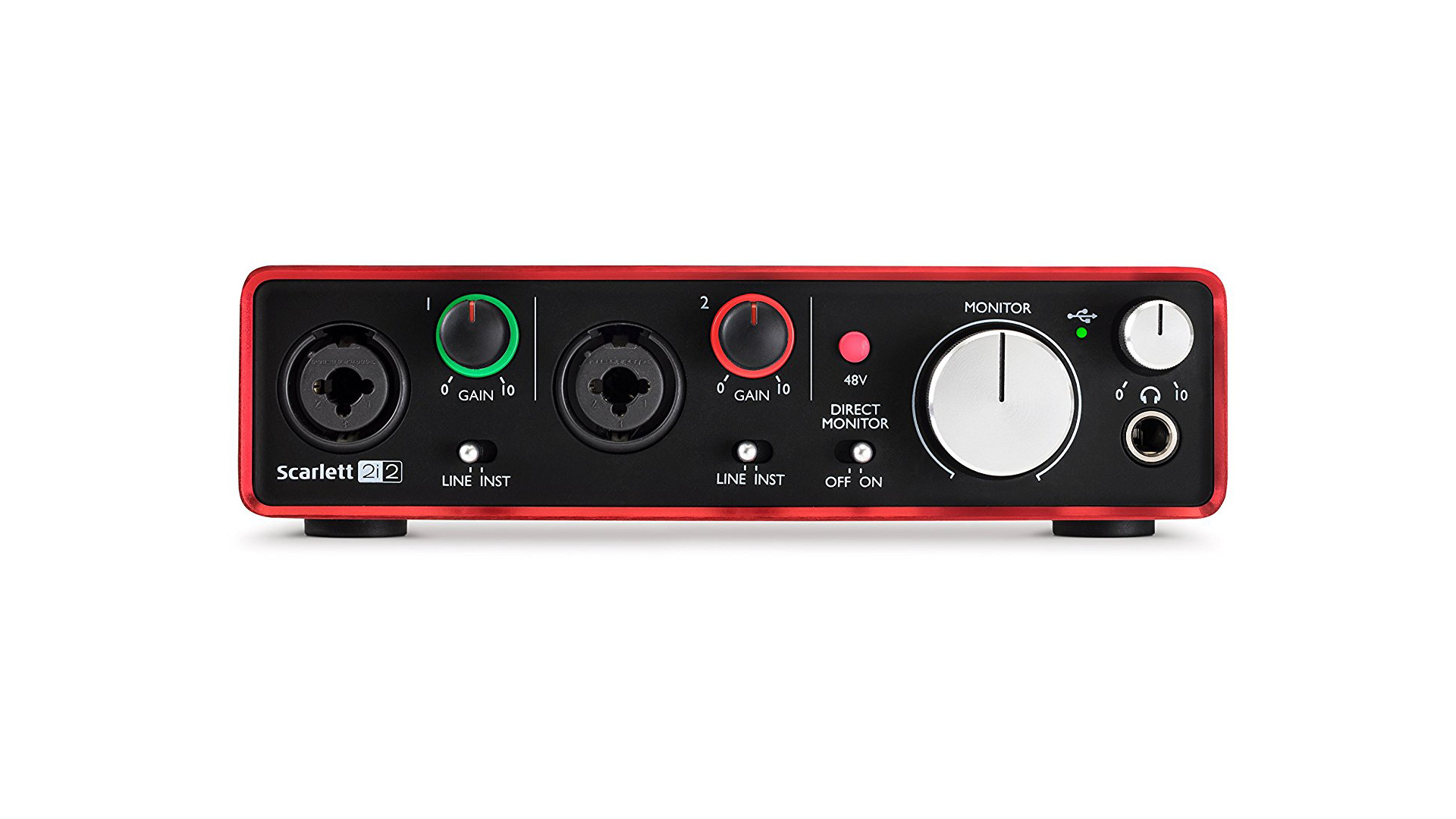Home>Production & Technology>Metronome>How To Sync Metronome To Song


Metronome
How To Sync Metronome To Song
Modified: February 15, 2024
Learn how to sync your metronome to any song and improve your timing and rhythm. Get step-by-step instructions and tips for using a metronome effectively.
(Many of the links in this article redirect to a specific reviewed product. Your purchase of these products through affiliate links helps to generate commission for AudioLover.com, at no extra cost. Learn more)
Table of Contents
Introduction
Music is a beautiful art form that requires precision and rhythm. Whether you are a musician, a dancer, or simply enjoy listening to music, you understand the importance of staying in sync with the beat. This is where a metronome comes in handy. A metronome is a tool that helps to maintain a steady tempo and keep musicians and performers in time.
In this article, we will explore the process of syncing a metronome to a song. Syncing the metronome to the song is crucial for musicians, as it helps them develop a strong sense of timing and stay in perfect rhythm with the music. It is an essential skill for individual practice, rehearsals, and live performances. By syncing the metronome to the song, you can improve your timing, accuracy, and overall musicality.
Whether you are a beginner or an experienced musician, mastering the art of syncing a metronome to a song will enhance your musical abilities and elevate your performances to a whole new level. So, let’s dive in and discover the steps to effectively sync a metronome to a song.
Importance of Syncing Metronome to Song
Syncing a metronome to a song might seem like a simple task, but it plays a crucial role in improving your musical skills. Let’s explore the importance of syncing a metronome to a song:
1. Develops a Strong Sense of Timing: One of the fundamental aspects of music is having a steady sense of timing. By syncing the metronome to the song, you train your internal clock to stay in perfect rhythm and stay on beat. This helps you stay in sync with other musicians and ensures a cohesive performance.
2. Improves Accuracy and Precision: Syncing the metronome to the song allows you to focus on playing each note or executing each dance move with accuracy. It helps you develop muscle memory and ensures that you hit every beat precisely. This level of precision enhances the overall quality of your performance.
3. Enhances Musicality: Playing or performing with a metronome helps you understand the nuances of timing. It allows you to experiment with different musical phrasing, accents, and dynamics while staying within the constraints of a steady beat. This enhances your musicality and ability to express emotions effectively through your performance.
4. Prepares for Collaborative Performances: Syncing a metronome to a song is essential when preparing for collaborative performances, such as playing in a band or accompanying a vocalist. It ensures that everyone is on the same page and playing together harmoniously. It also facilitates seamless transitions between different sections of the song.
5. Builds Confidence: Practicing with a synced metronome boosts your confidence as a musician. It provides a solid foundation for your playing, allowing you to focus on other aspects of your performance without worrying about timing issues. When you are confident in your timing abilities, you can deliver a confident and engaging performance.
Overall, syncing a metronome to a song is a valuable skill that musicians and performers should cultivate. It promotes discipline, precision, and musicality. Whether you’re starting out with a simple song or tackling complex musical compositions, syncing the metronome to the song will undoubtedly enhance your musical journey.
Choosing the Right Metronome
Choosing the right metronome is essential for effective syncing to a song. With a wide range of options available, it’s important to consider a few key factors:
1. Metronome Type: There are different types of metronomes available, including digital metronomes, mechanical metronomes, and smartphone apps. Digital metronomes offer a wide range of features, such as different sounds, rhythm patterns, and tempo settings. Mechanical metronomes are traditional and provide a visual swinging pendulum to follow. Smartphone apps offer convenience and flexibility but may lack some of the features found in dedicated metronomes. Consider your preferences and needs when selecting the metronome type.
2. Tempo Range: Check the tempo range of the metronome. Ensure that it covers the full range of tempos you require for the songs you want to sync. Some metronomes have a limited range, while others offer a broader selection. It’s always better to have a wider tempo range to accommodate different musical styles.
3. Sound Options: Different metronomes produce various sounds, such as clicks, beeps, or even drum sounds. Choose one that offers sounds that are easy for you to follow and blend well with the instrument or song you’re syncing to. It’s also helpful to have an adjustable volume control to suit your preferences and the environment in which you’re practicing.
4. Rhythm Patterns: Consider whether you need metronomes with built-in rhythm patterns. Some metronomes can play different time signatures and complex rhythms, which can be beneficial for practicing diverse musical styles. However, if you primarily focus on syncing to songs with a regular beat, a metronome with basic time signatures would suffice.
5. User-Friendly Interface: Look for a metronome with an intuitive and user-friendly interface. The buttons should be easy to navigate, allowing you to change tempo, rhythm patterns, and other settings quickly. Clear displays and visible indicators are essential to ensure you can easily see and follow the tempo while syncing to the song.
6. Portability and Durability: Consider the portability and durability of the metronome, especially if you plan to use it for live performances or on-the-go practice. Look for compact designs that can easily fit in your instrument case or pocket. Additionally, ensure the metronome is sturdy enough to withstand regular use and potential travel.
Take your time in selecting the right metronome that suits your needs and preferences. Remember that syncing a metronome to a song is an ongoing process, so investing in a reliable and versatile metronome will greatly contribute to your musical journey.
Setting Up the Metronome Tempo
Before you can sync a metronome to a song, you need to set the tempo. The tempo refers to the speed of the music, typically measured in beats per minute (BPM). Here’s how you can set up the metronome tempo:
1. Familiarize Yourself with the Song: Begin by listening to the song you want to sync the metronome to. Pay attention to the tempo and how the beats are emphasized. It can be helpful to tap along with the song to get a feel for the rhythm and pace.
2. Start with a Baseline Tempo: Choose an initial tempo that you feel comfortable with or that matches the original tempo of the song. You can refer to sheet music or the original recording to find the suggested tempo. If you’re unsure, start with a moderate tempo that allows you to play or move comfortably.
3. Set the Tempo on the Metronome: Use the controls or buttons on your chosen metronome to set the desired tempo. Most digital metronomes have a BPM display where you can directly input the tempo. Mechanical metronomes often have a dial or weight that you can adjust to set the tempo. Ensure that the metronome is set to the desired BPM before proceeding.
4. Gradually Increase or Decrease the Tempo: If the initial tempo feels too slow or fast, you can adjust it accordingly. Gradually increase or decrease the tempo on the metronome until it aligns with your preferred speed or matches the tempo of the song you want to sync to. Make small adjustments to find the perfect tempo that suits your needs.
5. Experiment with Different Tempos: Depending on your level of proficiency or the complexity of the song, you may want to experiment with different tempos. Slow down the tempo for challenging passages to allow for better accuracy and understanding of the music. Alternatively, increase the tempo if you want to challenge yourself and improve speed and precision.
6. Practice at Various Tempos: Once you have set the metronome tempo, it’s time to practice. Play along with the metronome, keeping in mind that you need to synchronize your playing or movements with the click or beats. Practice at different tempos to improve your adaptability and sense of timing with the metronome.
Remember, setting up the metronome tempo is not a one-time task. As you progress and become more comfortable with a particular song or piece, you might want to adjust the tempo to further challenge yourself or explore different musical interpretations. Regularly revisiting and fine-tuning the metronome tempo will help you maintain accuracy and improve your rhythmic skills.
Listening to the Song and Finding the Beat
Syncing a metronome to a song requires a keen ear to identify the beat and establish a connection with the music. Here’s how you can listen to the song and find the beat:
1. Focus on the Rhythm: Start by listening to the song’s overall rhythm. Pay attention to the prominent percussion instruments, such as drums or rhythm guitar, as they often indicate the underlying beat. Try to feel the pulse of the music and identify the consistent rhythm that runs throughout the song.
2. Clap or Tap Along: Once you have a sense of the rhythm, try clapping or tapping your foot along with the music. This physical engagement will help you internalize the beat and establish a connection between your body and the song. Feel the natural accents and subdivisions within the music as you clap or tap along.
3. Identify the Downbeat: The downbeat is the strongest beat in a musical measure and typically serves as a reference point for the rhythm. Listen for the beat that feels most emphasized and falls at the beginning of each measure. This downbeat will guide your synchronization with the metronome.
4. Count the Beats: As you tap or clap along, start counting the beats out loud. Begin with a simple count of “1, 2, 3, 4,” accenting the downbeat. This will help you internalize the rhythm and establish a sense of timing. Counting the beats aloud can also assist you in syncing the metronome later on.
5. Use Visual Clues: In addition to listening, utilize visual cues in the music to find the beat. Watch the conductor’s movements or observe the drummer’s kick drum hits. These visual indicators can provide a clearer sense of the beat and make it easier to sync the metronome accurately.
6. Practice with the Song: Once you have a solid grasp of the song’s beat, start practicing playing or moving to the music. Use the metronome as a guide, playing or moving in sync with the metronome clicks or beats while following the song’s rhythm. This practice will reinforce your sense of timing and help you internalize the beat more effectively.
Listening to the song and finding the beat is a crucial step in syncing the metronome. The more you train your ears to identify the rhythm and connect with the music, the easier and more accurate your synchronization with the metronome will be. So, take your time, immerse yourself in the song, and let the rhythm guide you.
Adjusting the Metronome Tempo
Adjusting the metronome tempo is an important step in syncing it to a song. Sometimes the initial tempo you set may not match the song perfectly, or you may want to speed up or slow down for different sections of the music. Here’s how you can adjust the metronome tempo effectively:
1. Observe the Song’s Tempo Changes: Listen carefully to the song and identify any tempo changes or variations. Some songs may have sections that require a faster or slower tempo. Pay attention to these changes as they will influence the adjustments you make to the metronome tempo.
2. Increase or Decrease the BPM: If the metronome’s tempo is too slow or fast compared to the song, you can adjust the BPM (beats per minute) accordingly. Digital metronomes usually have buttons or controls to increase or decrease the tempo. On a mechanical metronome, you can adjust the weight or dial to change the tempo. Make small increments or decrements until the metronome’s tempo matches the desired speed.
3. Use Tempo Markings as Reference: If you have the sheet music or a reference recording of the song, look for tempo markings such as “Allegro” or “Adagio.” These markings give an indication of the intended tempo and can guide your adjustments to the metronome. Use them as a reference point to align the metronome tempo with the song.
4. Practice with the Adjusted Tempo: Once you’ve made the necessary adjustments, practice playing or moving to the song with the new metronome tempo. Pay close attention to your timing and make sure you stay in sync with the metronome beats. This practice will help you internalize the adjusted tempo and improve your overall sense of timing.
5. Experiment with Different Tempos: Depending on your preferences and the musical interpretation you want to achieve, don’t be afraid to experiment with different tempos. You can try slightly faster or slower tempos to bring out different nuances in the music. However, be mindful of maintaining musicality and staying true to the intended tempo of the song.
6. Gradual Transitions: If the song has sections with different tempos, make sure to smoothly transition from one tempo to another. Gradually increase or decrease the metronome tempo over a few beats or measures to avoid abrupt tempo changes. This will ensure a seamless and natural progression between the sections of the song.
Remember, adjusting the metronome tempo is a dynamic process. As you become more familiar with the song and gain a deeper understanding of its rhythm and phrasing, you may find it necessary to fine-tune the metronome tempo. Trust your musical intuition and make the necessary adjustments to create a synchronized and cohesive performance.
Syncing the Metronome to the Song
Syncing the metronome to the song involves aligning the metronome’s tempo and beats with the rhythm of the music. This process ensures that you stay in perfect time and maintain a consistent tempo throughout your performance. Here are the steps to effectively sync the metronome to the song:
1. Start with the Baseline Tempo: Begin by setting the metronome to the baseline tempo you determined earlier. This tempo should be a good starting point that matches the overall speed and feel of the song. The downbeat of the metronome should align with the song’s downbeat.
2. Use the Metronome Click or Beat as a Guide: Listen to the metronome’s click or beat and tap or play along with it. Focus on syncing your playing or movements with the metronome’s rhythm. This helps train your internal sense of timing and ensures that you play or move in perfect sync with the metronome.
3. Adjust the Metronome if Needed: Pay attention to how well the metronome is synchronizing with the song. If you find that you’re consistently ahead or behind the beat, make minor adjustments to the metronome’s tempo until it aligns perfectly with the song. Listen closely to the song and the metronome simultaneously to achieve this synchronization.
4. Pay Attention to Musical Phrases and Accents: When syncing the metronome to the song, it’s important to consider musical phrases and accents. Many songs have natural fluctuations and variations in tempo to emphasize certain musical elements. As you play or move along with the metronome, be mindful of these musical cues and adjust your performance accordingly.
5. Continually Listen and Adjust: Throughout the process of syncing the metronome to the song, it’s vital to continually listen to both the song and the metronome. Pay attention to any subtle variations or changes in the song’s rhythm and adjust the metronome accordingly. Regularly fine-tuning the synchronization will help you maintain a consistent and precise performance.
6. Practice with the Synced Metronome: Once you have successfully synced the metronome to the song, practice playing or moving to the music with the metronome as your guide. This continuous practice will reinforce your sense of timing and ensure that you develop a strong rhythmic foundation. Focus on staying locked in with the metronome, making any necessary adjustments to maintain the synchronization.
By following these steps and actively listening to both the song and the metronome, you can successfully sync the metronome to the song. This synchronization will greatly enhance your musical performance, allowing you to play or move with precision, accuracy, and a solid sense of rhythm.
Practicing with the Synced Metronome
Practicing with a synced metronome is an effective way to improve your rhythm, timing, and overall musicality. By incorporating the metronome into your practice routine, you can develop a solid sense of timing and play or move with greater precision. Here are some tips on how to make the most out of your practice sessions with a synced metronome:
1. Start Slowly: Begin by setting the metronome to a slow tempo, especially if you’re learning a new piece or practicing complex musical passages. Starting slowly allows you to focus on accuracy and understand the rhythm more clearly. As you become more comfortable, gradually increase the tempo to challenge yourself and build speed.
2. Focus on Subdivisions: Pay attention to the subdivisions between the clicks or beats of the metronome. This will help you internalize the smaller rhythmic units within each measure. Count or feel these subdivisions as you play or move, ensuring that you stay in sync with the metronome and maintain a steady tempo.
3. Use the Metronome as a Reference: Think of the metronome as a guide or reference point as you practice. The consistent clicks or beats provide a reliable framework for your playing or movements. Use the metronome to check your timing, make adjustments when needed, and ensure that you’re staying in sync with the rhythm of the music.
4. Focus on Accuracy: Practicing with a metronome encourages precision and accuracy in your performance. Concentrate on playing or moving in perfect sync with the metronome’s beats. This will help improve your overall technique and ensure that you’re maintaining a consistent tempo throughout the piece.
5. Experiment with Different Musical Styles: While practicing with a metronome, don’t limit yourself to a specific genre or musical piece. Explore different musical styles and genres to broaden your rhythmic abilities. Practice playing or moving to varying rhythms, tempos, and time signatures. This will enhance your versatility and adaptability as a musician or performer.
6. Gradually Increase the Difficulty: As you become more comfortable playing or moving with the metronome, gradually increase the difficulty of the music you practice. Challenge yourself with complex rhythms, faster tempos, and intricate passages. The metronome will help you stay grounded and maintain a steady tempo, even as the difficulty level increases.
7. Record and Assess: Record your practice sessions with the metronome and listen back to evaluate your performance. Pay attention to areas where your timing may be inconsistent or where you might need to make further adjustments. Use the recordings as a tool for self-assessment and improvement.
Remember, practicing with a synced metronome is an ongoing process. Consistent and focused practice will gradually improve your sense of rhythm and timing. With time and dedication, you’ll develop a strong foundation that will enhance your overall musical abilities and performances.
Conclusion
Syncing a metronome to a song is a valuable skill that can greatly enhance your musical performance. By aligning the metronome’s tempo and beats with the rhythm of the music, you develop a strong sense of timing, accuracy, and musicality. It provides a solid foundation for your playing or movements, allowing you to stay in perfect sync with the music.
Choosing the right metronome and setting up the tempo are important initial steps in the process. By selecting a metronome that suits your needs and preferences, you ensure a seamless and user-friendly experience. Setting the tempo correctly allows you to establish a strong starting point for syncing the metronome to the song.
Listening to the song and finding the beat is a critical step that helps you connect with the music. By identifying the rhythm and understanding the song’s overall structure, you can tap into its essence and sync your performance accordingly.
Adjusting the metronome tempo is necessary to achieve a perfect synchronization. Fine-tuning the tempo to match the song and making gradual changes when needed ensures that you stay locked in with the music.
Syncing the metronome to the song creates a powerful bond between the metronome’s rhythm and your performance. It allows you to play or move with precision and accuracy, emphasizing musical phrasing, accents, and dynamics effectively.
Practicing with the synced metronome is where the magic happens. By incorporating it into your practice routine, you develop a solid sense of timing, improve your technique, and enhance your overall musical skills. Gradually increasing the difficulty, focusing on accuracy, and experimenting with different musical styles will elevate your performance to new heights.
In conclusion, syncing a metronome to a song is an essential skill for musicians and performers. It enables you to develop a strong sense of rhythm, improve precision and accuracy, and deliver captivating performances. So, embrace the metronome as your musical partner and start syncing it to your favorite songs to unlock your full potential as a musician.

